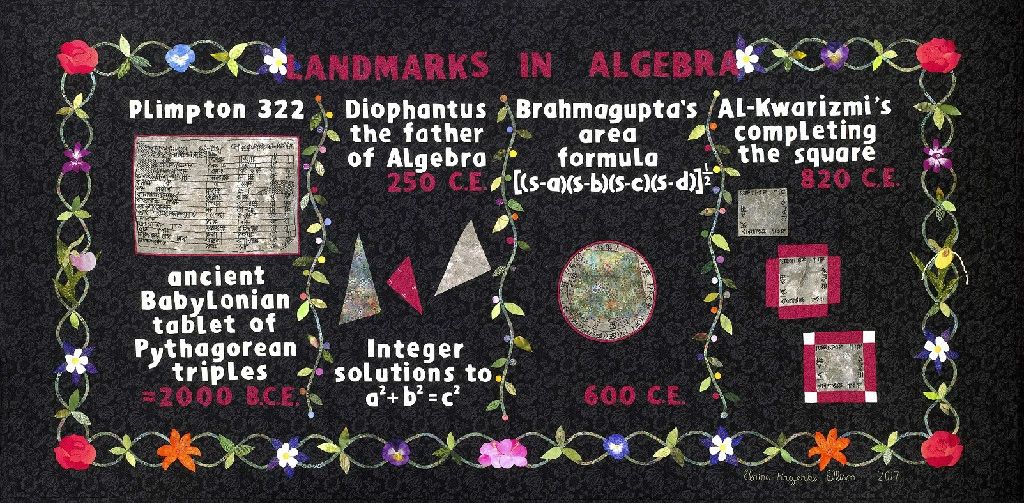Mathematical Quilts
Some of my work...

Landmarks In Algebra - This four panel quilt illustrates significant contributions to the development of Algebra. The Plimpton 322 is a Babylonian Cuneiform tablet showing early knowledge of the Pythagorean Triples. This tablet dates from approximately 2000 B. C. E. Diophantus ( b. 201 - 215 C.E., d. 285-299 C.E) is highlighted in the second panel. Amongst his contributions to Algebra we find the importance of integer solutions to equations. Brahmagupta's (b. 598 C.E., d. 665 C.E.) contribution to cyclic quadrilaterals is shown in the third panel. Finally, Al-Kwarismi's ( b. 780 C. E., d.850 C. E.)
completing the square technique is shown.